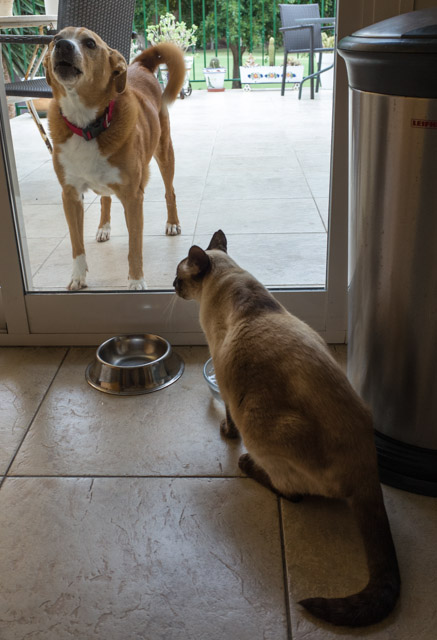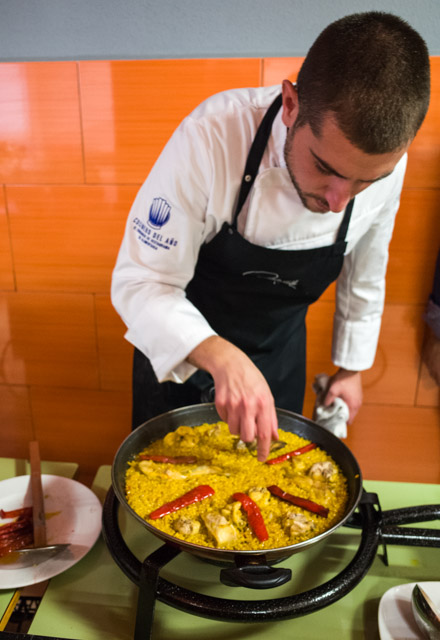Most of this week’s pictures are from the office where I work, and from a course in cooking arroz alicantino, or paella, that we went to on Saturday morning.
46_1
A scene from home to start the blog. The cat drinks from the dog’s water bowl while the dog protests outside:

46_2
Tuesday night we had another wine tasting at the office, this time presented by a bodega from our own Alicante province, El Sequé. The bodeguero is passionate about his wine philosophy and is always happy talking about his wine and about wine in general:

46_3
The people in the audience listen attentively:

46_4
Contemplating the wine:

46_5
Smelling the wine:

46_6
Tasting the wine:

46_7
Afterwards, we eat. Philippe is actually the man in charge of the food service at our office:

46_8
Animated conversation:

46_9
The construction of our new office building is proceeding at a fast pace, with the inauguration ceremony set for November 17th, and the first occupants moving in during January. Work goes on day and night to have at least the ground floor ready for the inauguration:

46_10

46_11
Serious landscaping:

46_12

46_13
As usual, I was out cycling every morning, before going to work. One morning the sunrise along our beach was particularly photogenic:

46_14
Friday night we went to eat at Los Charros, our local tapas place which I had not visited since April for a variety of reasons. Fortunately, nothing has changed:

46_15
When you order a beer at Los Charros, you get a free tapa, such as this stuffed tomato:

46_16
Or one of these mini-open faced sandwiches:

46_17
The main dishes at Los Charros are plentiful and cheap, ranging from 4 to 8 Euros. This is not light food, which is why I have not been here for some months. On this occasion, I ordered codillo, the Spanish version of Germany’s Eisbein or Poland’s golonka:

46_18
On Saturday morning we attended a course in making Alicante rice, commonly known as paella (although paella is just one kind of rice dish made here). The instructor, a chef called Mario Piñol, starts with the basics, explaining the types of rice grown in the Valencia region:

46_19
The ingredients are lined up; here, seafood:

46_20
Cubed chicken and rabbit:

46_21
The heart of each rice is the broth, or caldo which, for best results, must be made from scratch. Here, Mario chops the vegetables:

46_22
Red wine is added, partly for taste, partly for colour:

46_23
The caldo is made with fish pieces (often less desirable ones such as heads), vegetables, wine, herbs and spices:

46_24
Swinging the pot:

46_25
Stirring the pot, with an interested onlooker:

46_26
Mario is not a cook who does things “by the eye”. He measures and weighs the ingredients. Olive oil, for example–30 ml per person:

46_27
One of the key moments. The caldo is added to the rice:

46_28
Once the rice has cooked enough, it is removed from the caldo:

46_29
The chicken and rabbit pieces are fried:

46_30
Rabbit and rice:

46_31
Putting the finishing touches on the paella de carne:

46_32
Paella de carne, ready to eat:

46_33
Paella de mariscos, ready to eat:
